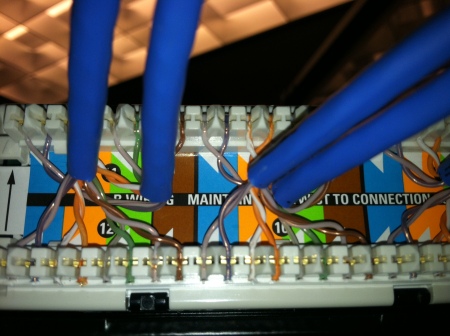Disk-based backup trends and technologies
Stephen J. Bigelow, SearchStorage.com
06.08.2006
Selecting and implementing a backup scheme that is fast, safe and cost-effective poses a challenge for businesses of all sizes — presenting VARs and systems integrators like yourself with an opportunity to offer services. Traditional tape systems simply do not meet the demands of today’s busy data centers, and administrators are looking at disk-based storage for data protection, backup tasks and archival storage. This tip offers a primer on disk-based storage and insights into technologies you may want consider bundling.
Disk backup systems
Backups are all about time. It can take several hours to back up a large server to tape. Backing up an entire data center to tape can take 12 hours or more. Since most network data is inaccessible during a backup process, the procedure is typically performed in the evenings or off-peak hours to minimize service interruptions to end users.
With hard disk costs falling, disk-based storage can accomplish the same backup tasks in just a fraction of the time needed for tape, while being cost competitive with tape systems. Not only does this reduce backup time, but those same backup disks can also speed recovery times. Once data is on a disk-based backup system, RAID techniques ensure data integrity and prevent data loss in the face of disk failures. These are significant benefits for busy organizations that rely on 24/7 network operations.
Disk backup systems can be implemented as a modular NAS, such as EMC Corp.’s NS series, or as an expandable SAN platform, like EMC’s Clariion CX700. Sun Microsystems Inc. and Hitachi Data Systems Inc. are other recognized providers of disk storage systems. In addition to hardware implementation, administrators must also consider backup software and storage management tools. For example, EMC’s Clariion includes the Navisphere Management Suite for storage management, and configuration and monitoring, in addition to snapshot, mirroring and replication software. It’s important to consider the availability and cost of software when selecting a disk storage system.
Disk vs. tape
Making an argument for tape is becoming increasingly difficult. Tape is a mature and relatively inexpensive offline storage technology, but it does have limitations. Tape is generally slow, so large backup and restore operations can take hours — even days. Searches are often impractical unless the user knows exactly which tapes and file names are required — difficulties that increase dramatically when there are hundreds or thousands of tapes to contend with. The media itself is vulnerable to loss or theft, especially when tapes must be transported to off-site storage.
Disk-based storage is emerging as a cost-effective alternative to tape, allowing companies to retain huge amounts of data on inexpensive SATA or SAS disk arrays. Disk’s superior performance supports quick backups and restorations, and improves the user service level by making corporate data available “nearline.” Disk arrays also leverage RAID techniques to maintain data integrity — if one disk fails, the data on that disk can be rebuilt to a spare drive. Although disk systems often cost more than tape libraries, users note that the total cost of ownership is generally comparable to that of tape libraries.
Virtual tape libraries
Although tape systems are hard pressed to meet shrinking backup and restore windows, many companies have a significant investment in tape-oriented backup software and management tools. Rather than re-architecting a backup system from scratch, you may deploy virtual tape libraries (VTLs) as a more convenient solution. A VTL stores data on hard disk, but it appears to be a conventional tape system to backup software and hierarchal storage management (HSM) tools. This gives VTLs far better performance than true tape libraries, but allows easier integration with existing storage infrastructures with a minimum learning curve. IBM, Sun (StorageTek brand) and FalconStor Stofware Inc. are three recognized VTL vendors.
Eliminating tape media prevents tape loss or damage, but many VTL systems include support for more traditional tape hardware. This allows storage management software to relegate aged or unnecessary data from hard disk to tape for long-term, low-priority archiving if desired (e.g., using a VTL as a secondary storage tier and supporting tape as a third tier). In cases where administrators need to balance archival tape and disk performance, a VTL may be used to maintain corporate data on faster disk, but periodically perform complete backups to tape without interrupting normal network behavior.
Emerging backup technologies
Disk storage is being deployed in a variety of advanced backup tasks. Disk arrays are adept at single-instance storage, or content-addressed storage, (CAS) for long-term data retention. CAS storage is notable because only one copy of a given file is ever retained — even when multiple copies of a file or attachment are being backed up. CAS also includes fingerprinting technologies that ensure files are unmodified, which is beneficial for electronic discovery and other corporate governance needs [see the SearchStorage.com article on CAS].
Disks are also providing improved backups using snapshot and continuous data protection (CDP) techniques to lower recovery times. Snapshots are periodic “saves” of system data, which can be initiated several times each day — even once an hour. System administrators can recover a system from its latest snapshot on disk. CDP offers more granularity; recording each I/O operation into a disk record, and allowing administrators to recover a system right down to the last read or write with virtually no data loss. All of these technologies are impossible with tape. [see the SearchStorage.com article on CDP].





